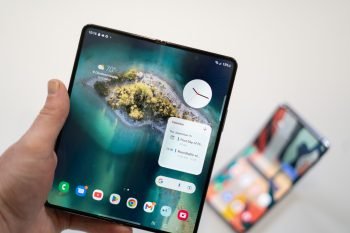
If you thought this year’s Samsung smartphones were good, just wait until 2023
For most people, Samsung Galaxy S22 Ultra is the ultimate smartphone experience. With its cutting-edge technology and stunning design, it’s early the phone at the top of the list for most Android users.
First and foremost, the S22 Ultra boasts a revolutionary camera system that takes smartphone photography to the next level with its 108-megapixel sensor for its main camera, ensuring that every detail is captured in crystal clear clarity. And with its advanced low-light capabilities, you’re able to snap stunning photos even in the darkest of environments.
But the camera doesn’t stop there. The S22 Ultra also comes equipped with a 10x periscope zoom camera, allowing you to capture images you never thought you’d be able to capture with a smartphone.
On top of that, the phone sports a gorgeous 120Hz 6.8-inch AMOLED display, an integrated S-Pen, the best Qualcomm chipset money could buy (at the time), a 5,000 mAh battery and a whole lot more.
What more could you ask for?
According to a new report out of South Korea, Samsung’s DX (Device Experience) division has been mandated to “think about ways to strengthen the competitiveness of smartphones without getting caught up in cost reduction” by Samsung Electronics Vice Chairman Han Jong-hee. To drive the point home, he also stated that “cost reduction is something that even latecomers like Chinese companies can do without difficulty.”
As someone who’s used all of Samsung’s 2022 flagship devices for at least a few weeks, I never felt like they weren’t competitive. In the US and globally, Samsung has a stranglehold on the Android section of the market, but Han Jong-hee’s comments regarding cost reduction hint at a greater focus on Samsung’s flagship devices.
While the S-series smartphones get a lot of attention in the US market, it’s the A-series that has allowed Samsung to stay competitive with low-cost Chinese OEMs. I wasn’t able to find any numbers for 2021, but in 2020, the average sale price of a Samsung smartphone was $292 – the highest it has ever been. To have such a low average sale price, Samsung must be selling 3 to 5 times more devices below that number to offset the $1,000 smartphones.
The problem is, I don’t think Samsung can really change much on the high-end of the market. The company could retool its marketing strategy in an effort to gain more mindshare and steal away a small percentage of people who would otherwise spend their money on a Pro-series iPhone. But that wouldn’t move the needle much for Samsung.
Its flagship devices already have every bell and whistle you can possibly imagine. The only real segment that could make a difference for Samsung is to make its mid-range smartphones more appealing.
Every time I hear an Android user complaining about their phone and how they just wish they had an iPhone, I always ask why they’re not happy with their device. Most of the time, they’re using a flagship Android device that’s significantly past its prime. Just last month, I convinced a friend to not get an iPhone simply because his LG G6 didn’t have a good camera and was slow compared to his daughter’s iPhone.
Just a quick public service announcement: if your phone is coming up on its 6th birthday, it’s time for an upgrade.
The same goes for cheap Android phones. If you’re not happy with the cameras or system performance of a $250 Samsung Galaxy A23, you’ll likely be just as happy with the $800 Galaxy S22 as you would be with an $800 iPhone.
And that’s where I think Samsung has a huge opportunity. If the company is able to supercharge its mid-range devices and make them more appealing to the general consumer who simply wants a phone that works, they’d be able to “steal” potential iPhone sales from Apple. Believe me, it’s a lot easier to convince an Android user who’s already on the platform to move up market a little than it is to try to pry an iPhone out of someone’s hands.
That being said, Samsung may have a few tricks up its sleeve for its high-end devices as well. Samsung’s Galaxy Z Flip4 has proven to be quite popular for those switching from iPhone to Samsung, so we could see them double down o the flip smartphone category and offer more variants. At $999, the Flip4 is a pretty good deal, but I think Samsung could have a massive hit on its hands if it released a mid-range flip phone at around $700.
We’ll have to see how things play out as we move into 2023. Samsung’s new approach may take a few years to fully implement, but I think this new focus from the company executives will make for an exciting year if you’re a smartphone fan.